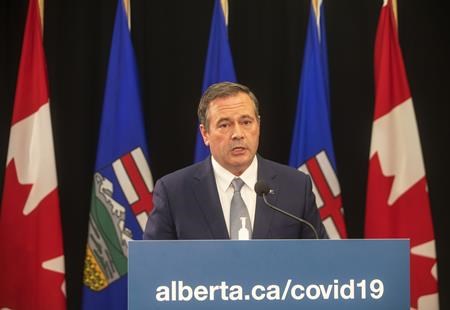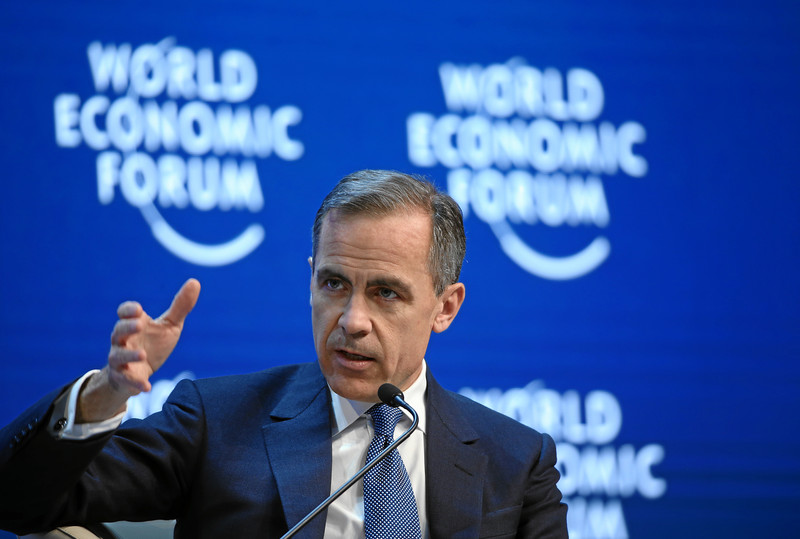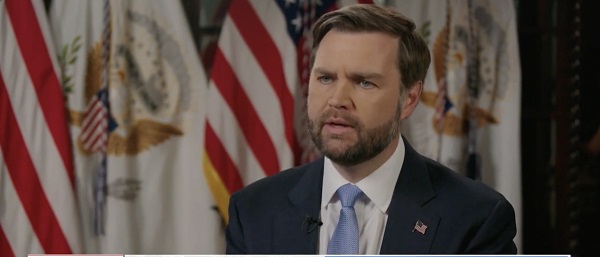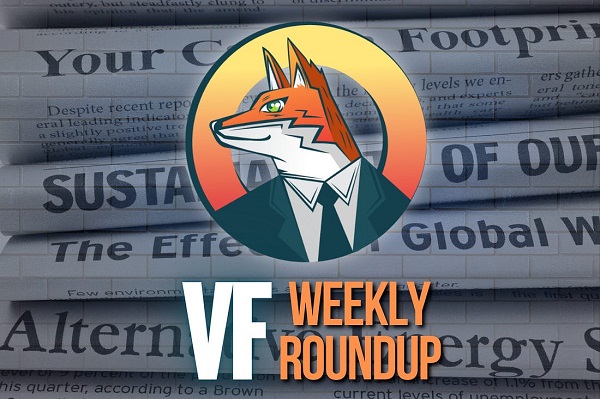Alberta
Vaccine Mandate ends in Alberta tonight at midnight!

From the Province of Alberta
Alberta takes steps to safely return to normal
Provincewide public health measures will be gradually lifted as the fifth wave of COVID-19 subsides and pressure on the health-care system eases.
Alberta will begin a careful and prudent plan to phase out public health measures, starting Feb. 8. The three-step approach will begin with lower-risk activities while maintaining protections for the health-care system, including continuing care facilities.
Beginning Feb. 8 at 11:59 p.m., Alberta will move to step one, which includes the removal of the Restrictions Exemption Program and capacity limits on venues under 500 capacity, including libraries and places of worship, and allows for food and beverage consumption in seated audience settings for large events and entertainment venues. Mandatory masking for children and youth in schools, and for youth aged 12 and under in any setting will end Feb. 13 at 11:59 p.m.
“The last two years have taken a significant toll on Albertans’ overall health, social and economic well-being. Now that we are through the worst of the fifth wave and have achieved high vaccination rates, it is time to shift to a balanced approach where we are able to live with COVID-19 and return to normal.”
“The vast majority of Albertans are now fully vaccinated. It’s a major factor that now allows us to ease restrictions, but we will do so only as conditions show that our health system’s capacity is recovering. Albertans can help make that possible by getting every vaccine dose they are eligible for.”
Subsequent steps will see changes to working from home, masking requirements, large venue capacity limits and indoor social gathering limits, with a final step removing isolation requirements and COVID-specific measures in continuing care settings. The lifting of restrictions will progress once pressures on the health-care system have sufficiently eased.
Step one
Effective Feb. 8 at 11:59 p.m.:
- Restrictions Exemption Program (REP) ends, along with most associated restrictions.
- Entertainment venues will continue to have some specific rules in place:
- Restrictions on sale of food and beverages and consumption while seated in audience settings will be removed.
- Restrictions on closing times, alcohol service, table capacity in restaurants and interactive activities will remain in force.
- For all businesses, venues and facilities – whether they were previously eligible for the REP or not – capacity limits are removed, except for:
- Facilities with capacity of 500 to 1,000, which will be limited to 500.
- Facilities with capacity of 1,000-plus, which will be limited to 50 per cent.
Effective at 11:59 p.m. on Feb. 13:
- Masks will no longer be required for all children and youth in schools.
- Masks will no longer be required in any setting for children aged 12 and under.
Step two
Effective March 1:
- Any remaining provincial school requirements (including cohorting) will be removed.
- Screening prior to youth activities will no longer be required.
- Capacity limits will be lifted for all venues.
- Limits on social gatherings will be removed.
- Provincial mask mandate will be removed.
- Mandatory work from home removed.
Step three
To be determined based on hospitalization rates continuing to trend downwards
- COVID-specific measures in continuing care will be removed.
- Mandatory isolation becomes a recommendation only.
Additional details on all restrictions and measures in place will be released prior to each step at alberta.ca/CovidMeasures.
Alberta
Big win for Alberta and Canada: Statement from Premier Smith

Premier Danielle Smith issued the following statement on the April 2, 2025 U.S. tariff announcement:
“Today was an important win for Canada and Alberta, as it appears the United States has decided to uphold the majority of the free trade agreement (CUSMA) between our two nations. It also appears this will continue to be the case until after the Canadian federal election has concluded and the newly elected Canadian government is able to renegotiate CUSMA with the U.S. administration.
“This is precisely what I have been advocating for from the U.S. administration for months.
“It means that the majority of goods sold into the United States from Canada will have no tariffs applied to them, including zero per cent tariffs on energy, minerals, agricultural products, uranium, seafood, potash and host of other Canadian goods.
“There is still work to be done, of course. Unfortunately, tariffs previously announced by the United States on Canadian automobiles, steel and aluminum have not been removed. The efforts of premiers and the federal government should therefore shift towards removing or significantly reducing these remaining tariffs as we go forward and ensuring affected workers across Canada are generously supported until the situation is resolved.
“I again call on all involved in our national advocacy efforts to focus on diplomacy and persuasion while avoiding unnecessary escalation. Clearly, this strategy has been the most effective to this point.
“As it appears the worst of this tariff dispute is behind us (though there is still work to be done), it is my sincere hope that we, as Canadians, can abandon the disastrous policies that have made Canada vulnerable to and overly dependent on the United States, fast-track national resource corridors, get out of the way of provincial resource development and turn our country into an independent economic juggernaut and energy superpower.”
Alberta
Energy sector will fuel Alberta economy and Canada’s exports for many years to come

From the Fraser Institute
By any measure, Alberta is an energy powerhouse—within Canada, but also on a global scale. In 2023, it produced 85 per cent of Canada’s oil and three-fifths of the country’s natural gas. Most of Canada’s oil reserves are in Alberta, along with a majority of natural gas reserves. Alberta is the beating heart of the Canadian energy economy. And energy, in turn, accounts for one-quarter of Canada’s international exports.
Consider some key facts about the province’s energy landscape, as noted in the Alberta Energy Regulator’s (AER) 2023 annual report. Oil and natural gas production continued to rise (on a volume basis) in 2023, on the heels of steady increases over the preceding half decade. However, the dollar value of Alberta’s oil and gas production fell in 2023, as the surging prices recorded in 2022 following Russia’s invasion of Ukraine retreated. Capital spending in the province’s energy sector reached $30 billion in 2023, making it the leading driver of private-sector investment. And completion of the Trans Mountain pipeline expansion project has opened new offshore export avenues for Canada’s oil industry and should boost Alberta’s energy production and exports going forward.
In a world striving to address climate change, Alberta’s hydrocarbon-heavy energy sector faces challenges. At some point, the world may start to consume less oil and, later, less natural gas (in absolute terms). But such “peak” consumption hasn’t arrived yet, nor does it appear imminent. While the demand for certain refined petroleum products is trending down in some advanced economies, particularly in Europe, we should take a broader global perspective when assessing energy demand and supply trends.
Looking at the worldwide picture, Goldman Sachs’ 2024 global energy forecast predicts that “oil usage will increase through 2034” thanks to strong demand in emerging markets and growing production of petrochemicals that depend on oil as the principal feedstock. Global demand for natural gas (including LNG) will also continue to increase, particularly since natural gas is the least carbon-intensive fossil fuel and more of it is being traded in the form of liquefied natural gas (LNG).
Against this backdrop, there are reasons to be optimistic about the prospects for Alberta’s energy sector, particularly if the federal government dials back some of the economically destructive energy and climate policies adopted by the last government. According to the AER’s “base case” forecast, overall energy output will expand over the next 10 years. Oilsands output is projected to grow modestly; natural gas production will also rise, in part due to greater demand for Alberta’s upstream gas from LNG operators in British Columbia.
The AER’s forecast also points to a positive trajectory for capital spending across the province’s energy sector. The agency sees annual investment rising from almost $30 billion to $40 billion by 2033. Most of this takes place in the oil and gas industry, but “emerging” energy resources and projects aimed at climate mitigation are expected to represent a bigger slice of energy-related capital spending going forward.
Like many other oil and gas producing jurisdictions, Alberta must navigate the bumpy journey to a lower-carbon future. But the world is set to remain dependent on fossil fuels for decades to come. This suggests the energy sector will continue to underpin not only the Alberta economy but also Canada’s export portfolio for the foreseeable future.
-

 2025 Federal Election16 hours ago
2025 Federal Election16 hours agoPoilievre To Create ‘Canada First’ National Energy Corridor
-

 Automotive2 days ago
Automotive2 days agoAuto giant shuts down foreign plants as Trump moves to protect U.S. industry
-

 Energy2 days ago
Energy2 days agoTrump Takes More Action To Get Government Out Of LNG’s Way
-

 2025 Federal Election1 day ago
2025 Federal Election1 day agoMainstream Media Election Coverage: If the Election Was a NHL Game, the Ice Would be Constantly Tilted Up and to the Left
-

 Health2 days ago
Health2 days agoSelective reporting on measles outbreaks is a globalist smear campaign against Trump administration.
-

 2025 Federal Election1 day ago
2025 Federal Election1 day agoMark Carney is trying to market globalism as a ‘Canadian value.’ Will it work?
-

 International23 hours ago
International23 hours agoFREE MARINE LE PEN!’: Trump defends French populist against ‘lawfare’ charges
-

 Business2 days ago
Business2 days ago‘Time To Make The Patient Better’: JD Vance Says ‘Big Transition’ Coming To American Economic Policy








